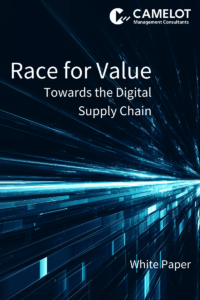Establishing a self-driving value chain is a fundamental change for any organization, one that needs to be accompanied by organizational change management (OCM). Our OCM experts share their experiences with change initiatives in DDMRP projects in this episode of the Demand-Driven MRP Expert Webcast series.
This fourth episode in our Demand-Driven MRP Expert Webcast series explains how organizational change management (OCM) helps employees understand the new supply chain operating model and its effects on their work, how to develop necessary capabilities within the company with a tailored training program, and how to maintain a high motivation for the initiative.
Transforming the operating model of a value chain affects many areas within an organization, from the strategic level to daily work of individual people. The long-term success of any transformation is based on the understanding the stakeholders affected by the change have of the Demand-Driven transformation’s goals and purpose. It is therefore necessary to have a solid change and learning concept for the Demand-Driven approach in place. Our experts recommend three pillars:
- Demand-Driven trainings that are tailored to the understanding the different audiences will need. This ranges from video-based DDMRP awareness trainings to three-day classroom trainings in preparation for the official DDMRP certification.
- Practical Demand-Driven trainings like the DDMRP Business Game offer a more comprehensive understanding on how the Demand-Driven approach is put into action. The simulation is an invaluable experience for key stakeholders in different supply chain management functions as it offers a risk-free environment to take the first steps in working with the new paradigm.
- To measure the effectiveness of a training, our experts recommend a Transformation Analytics solution such as PULSESHIFT. PulseShift measures the effectiveness of change measures, e.g., trainings, with micro-feedbacks from the different stakeholder groups. Leveraging insights from data instead of gut feeling to steer change initiatives makes it possible to react to actual developments within a group of employees.
Looking for more insights on the workings and benefits of the Demand-Driven model? Head over to the other episodes in our webcast series.
- Webcast 1 on concept and benefits: WHAT IS DEMAND-DRIVEN, HOW DOES IT RELATE TO DEMAND-DRIVEN MRP AND DEMAND-DRIVEN REPLENISHMENT, AND WHAT ARE POSSIBLE GAINS?
- Webcast 2 on evaluation: DOES THE CONCEPT WORK IN MY ENVIRONMENT? AND WHAT BENEFITS CAN I EXPECT?
- Webcast 3 on concept and solution design: HOW DID OTHER ORGANIZATIONS REALIZE THE BENEFITS?


